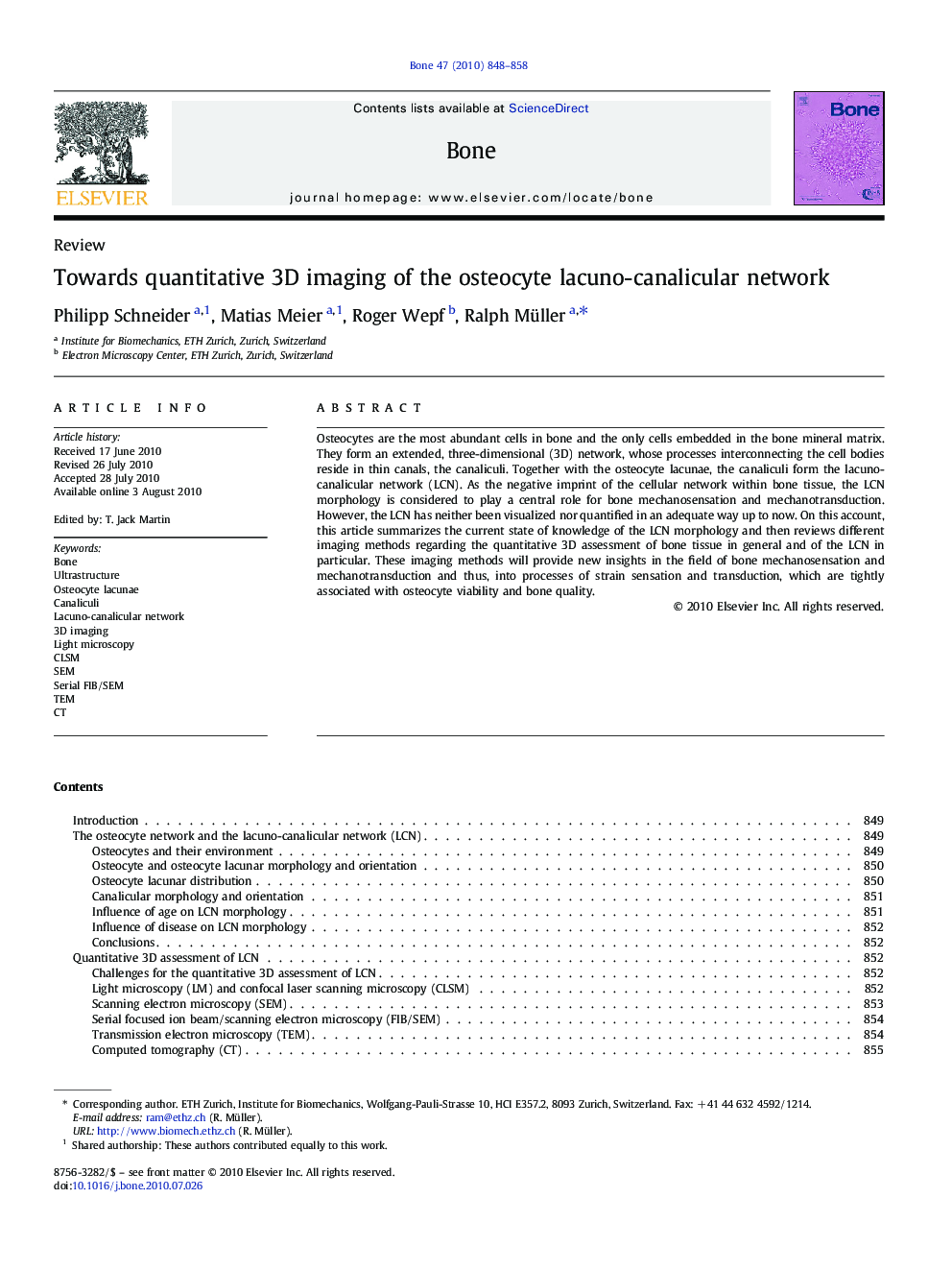| Article ID | Journal | Published Year | Pages | File Type |
|---|---|---|---|---|
| 2779909 | Bone | 2010 | 11 Pages |
Osteocytes are the most abundant cells in bone and the only cells embedded in the bone mineral matrix. They form an extended, three-dimensional (3D) network, whose processes interconnecting the cell bodies reside in thin canals, the canaliculi. Together with the osteocyte lacunae, the canaliculi form the lacuno-canalicular network (LCN). As the negative imprint of the cellular network within bone tissue, the LCN morphology is considered to play a central role for bone mechanosensation and mechanotransduction. However, the LCN has neither been visualized nor quantified in an adequate way up to now. On this account, this article summarizes the current state of knowledge of the LCN morphology and then reviews different imaging methods regarding the quantitative 3D assessment of bone tissue in general and of the LCN in particular. These imaging methods will provide new insights in the field of bone mechanosensation and mechanotransduction and thus, into processes of strain sensation and transduction, which are tightly associated with osteocyte viability and bone quality.
